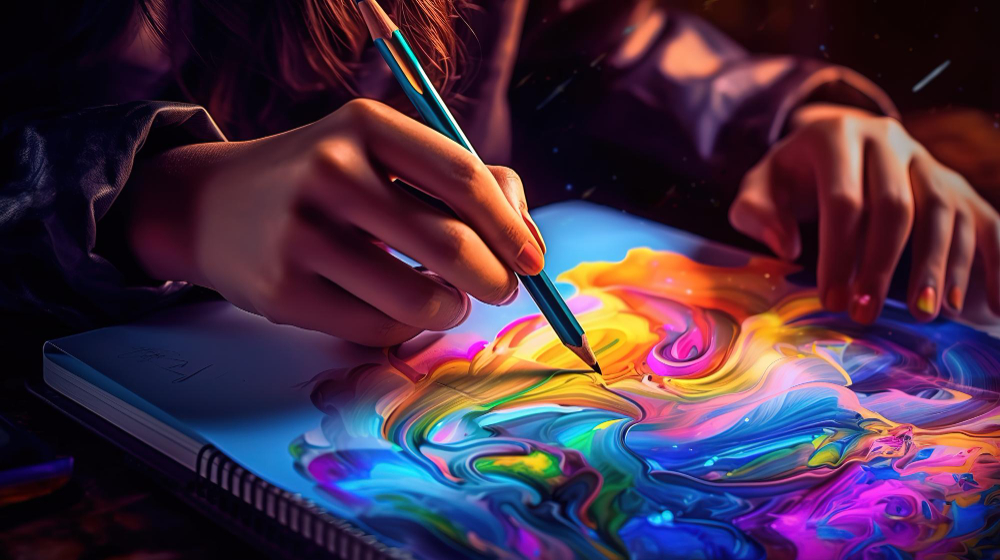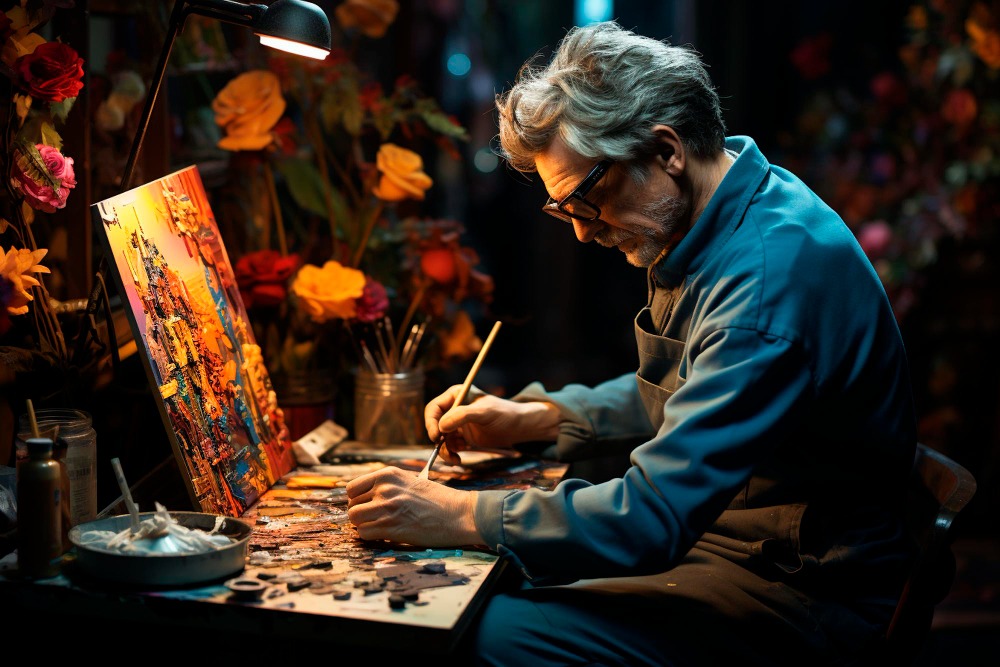Dreaming of a journey through the realm of creativity, the Bachelor of Fine Arts (BFA) program beckons aspiring artists to unlock their potential and sculpt their artistic vision. In this blog, we will delve into the intricacies of BFA, exploring its essence, course details, admission process, eligibility criteria, entrance exams, syllabus, types of courses, post-BFA options, specializations, and the vast array of career opportunities that await those passionate about fine arts.
Table of Content
What is Bachelor of Fine Arts?
The Bachelor of Fine Arts, commonly known as BFA, is a comprehensive undergraduate program that provides a platform for students to immerse themselves in various forms of visual and performing arts. It is a transformative journey that hones creative skills, fosters artistic expression, and equips individuals with the knowledge and techniques necessary for a successful career in the world of arts.
Why Pursue Bachelor of Fine Arts (BFA)?
A question that often arises is why one should pursue a BFA. The answer lies in the unique blend of theoretical and practical learning experiences that BFA programs offer. Through intensive studio work, exposure to art history, and critical analysis of artistic concepts, students develop a profound understanding of their craft, preparing them for a myriad of creative endeavours.
Bachelor of Fine Arts: Course Details
The Bachelor of Fine Arts (BFA) curriculum is designed to provide a holistic education in the arts, encompassing drawing, painting, sculpture, photography, and various other mediums.
Courses are structured to progressively challenge and refine students' artistic abilities, fostering a deep appreciation for the diverse facets of fine arts.
- Foundational Courses: The initial semesters typically focus on foundational courses that introduce students to fundamental art principles. Drawing, painting, and sculpture are often part of the core curriculum, allowing students to develop a strong base in traditional artistic mediums.
- Art History: Understanding the historical context of art is integral to the BFA program. Courses in art history take students on a journey through various periods and movements, providing insights into the evolution of artistic expression and its cultural significance.
- Studio Courses: Studio courses form the heart of the Bachelor of Fine Arts (BFA) program. These hands-on classes give students the opportunity to apply theoretical knowledge, experiment with different mediums, and refine their artistic skills under the guidance of experienced instructors.
- Specialized Tracks: BFA programs often offer specialized tracks or concentrations, allowing students to tailor their education to specific areas of interest. These may include painting, sculpture, graphic design, digital arts, photography, and more. Specialized courses deepen knowledge and skills in chosen disciplines.
- Digital Arts and Technology: With the increasing influence of technology on the art world, BFA programs often incorporate courses in digital arts. Students learn to use digital tools and software, expanding their creative horizons in the realm of new media and technology-driven art.
| Course Level | Undergraduate Degree |
| BFA Full Form | Bachelor of Fine Arts |
| BFA Course Duration | 3-years |
| BFA Eligibility Criteria | 10+2 education with a focus on arts |
| BFA Admission Process | Merit-Based Selection and Entrance Exams include: BHU UET, UPSEE, AUCET, CUET etc. |
| BFA Average Salary | INR 3 to 4 lakhs |
| BFA Job Profiles | Visual Artist, Graphic Designer, Animator, Art Director, Museum or Gallery Curator, Art Educator |
Bachelor of Fine Arts: Admission Process
Admission into a Bachelor of Fine Arts (BFA) program is a gateway to the artistic realm.
Prospective students undergo a rigorous admission process that typically includes submitting a portfolio of their artistic work, academic transcripts, letters of recommendation, and possibly an entrance exam or interview.
Aspiring artists must showcase their passion and potential to secure a spot in this coveted program.
Research and Choose a Program:
Research various universities or art schools that offer Bachelor of Fine Arts (BFA) programs in the field you are interested in, whether it's painting, sculpture, graphic design, or another specialization.
Check Admission Requirements:
Review the admission requirements for each program. Typically, these requirements include a high school diploma or equivalent, standardized test scores (such as the SAT or ACT), and submission of a portfolio showcasing your artistic work.
Prepare a Portfolio:
The portfolio is a critical component of your application. It should showcase your best and most representative work. Include a variety of pieces that demonstrate your skills and creativity in different mediums. Follow the specific guidelines provided by the institution regarding portfolio format and content.
Complete Application Forms:
Fill out the application forms provided by the university or art school. Make sure to provide accurate and complete information.

Bachelor of Fine Arts: Eligibility Criteria
To embark on the BFA journey, candidates must meet specific eligibility criteria. Typically, this includes completing 10+2 education with a focus on arts, demonstrating proficiency in the chosen medium, and showcasing a keen interest in pursuing a career in fine arts.
Bachelor of Fine Arts: Entrance Exam
Many Bachelor of Fine Arts (BFA) programs require candidates to undergo an entrance exam that evaluates their artistic skills, creativity, and understanding of visual aesthetics. The entrance exam serves as a crucial step in assessing a candidate's suitability for the program.
Some of the tests include: BHU UET, UPSEE, AUCET, CUET etc.
Entrances for fine arts degree programs are based on creative fields, universities often design tests according to test the individual’s existing portfolios, creative aptitudes, observational skills, interviews etc.
Bachelor of Fine Arts: Syllabus According to Semester Wise
The Bachelor of Fine Arts (BFA) curriculum is often divided into semesters, each offering a unique set of courses that build upon the foundation laid in the previous semesters. From foundational courses to specialized studies, students traverse a carefully curated path that nurtures their artistic growth.
Semester 1: Foundations of Art
- Drawing Fundamentals
- Introduction to 2D Design
- Art History: Ancient to Renaissance
- Introduction to Color Theory
- Studio Practice: Basic Drawing Techniques
- Critical Analysis of Art
Semester 2: Exploring Mediums
- Painting Fundamentals
- 3D Design and Sculpture
- Art History: Renaissance to Modern
- Introduction to Printmaking
- Studio Practice: Exploring Painting Techniques
- Digital Art Basics
Semester 3: Specialized Tracks
- Specialization Course 1 (e.g., Painting, Sculpture, Photography)
- Art History: Modern to Contemporary
- Introduction to Digital Arts
- Studio Practice: Specialization Techniques
- Art Critique and Analysis
- Elective Course 1
Semester 4: Advanced Techniques
- Advanced Painting or Sculpture Techniques
- Art History: Contemporary Art Movements
- Advanced Digital Arts
- Studio Practice: Advanced Specialization Techniques
- Exhibition Design and Presentation
- Elective Course 2
Semester 5: Interdisciplinary Studies
- Interdisciplinary Art Projects
- Art History: Global Perspectives
- Advanced Digital Media and Technology
- Studio Practice: Interdisciplinary Exploration
- Professional Development in the Arts
- Elective Course 3
Semester 6: Professional Preparation
- Internship or Practical Experience
- Thesis Proposal Development
- Advanced Studio Practice
- Art History: Special Topics
- Entrepreneurship in the Arts
- Elective Course 4
Semester 7: Thesis Preparation
- Thesis Research and Development
- Advanced Studio Practice Continued
- Art History: Thesis Focus
- Professional Practices in the Arts
- Elective Course 5
Semester 8: Culmination and Exhibition
- Thesis Project Completion
- Exhibition Preparation
- Art History: Capstone Seminar
- Portfolio Development
- Graduation Exhibition
- Professional Development Seminar

What Are the Types of BFA Courses?
Bachelor of Fine Arts (BFA) programs often offer various specializations or tracks within the broader field of fine arts.
These may include painting, sculpture, graphic design, digital arts, and more. Understanding these specializations allows students to tailor their education to align with their specific artistic interests.
Some Premium Courses are:
Graphic Design:
BFA programs in graphic design focus on visual communication, layout design, typography, branding, and digital media. Students often develop skills in software like Adobe Creative Suite and gain a strong foundation in design principles.
Illustration:
Illustration programs emphasize the creation of visual narratives through drawing and storytelling. Students learn to use various techniques and mediums to convey ideas and messages in a visually compelling way.
Digital Arts and New Media:
This specialization involves the use of technology and digital tools in artistic expression. Courses may cover digital illustration, 3D modelling, animation, interactive media, and other forms of digital art.
Textile Arts/Fiber Arts:
BFA programs in textile or fibre arts cover the creation of art using textiles and fibbers. This may include weaving, embroidery, fabric dyeing, and the exploration of mixed media in textile-based art.
Animation:
Animation programs focus on the creation of moving images through traditional hand-drawn animation, computer-generated animation, and other techniques. Students learn storytelling, character design, and animation production.
Courses to Pursue After Bachelor of Fine Arts (BFA)
Upon completing a Bachelor of Fine Arts (BFA), the artistic journey doesn't end; it evolves. Graduates have a plethora of options for further education, including pursuing a Master of Fine Arts (MFA) or specialized courses that deepen their expertise in a particular aspect of fine arts.
BFA Specializations
Diving into specialized areas within fine arts opens up new dimensions of creativity. Whether it's exploring abstract expressionism, mastering digital media, or delving into art curation, specializations enable artists to carve a niche for themselves in the vast world of creative expression.
Some specializations to pursue are:
Sculpture:
Sculpture specializations focus on three-dimensional art forms, allowing students to work with materials such as clay, metal, wood, and found objects.
Ceramics:
Students in ceramics specializations learn techniques related to working with clay, including wheel throwing, hand building, glazing, and firing.
Photography:
Photography specializations cover both traditional and digital photography, including techniques in composition, lighting, darkroom processes, and digital image editing.
Bachelor of Fine Arts: Career Opportunities
A Bachelor of Fine Arts (BFA) opens doors to a myriad of career opportunities, transcending traditional notions of the starving artist. Graduates can explore avenues such as visual arts, graphic design, animation, art education, museum curation, and even entrepreneurship in the creative industry. The skills acquired during a BFA journey empower individuals to navigate the dynamic landscape of the arts.
Some top career roles can be:
- Visual Artist: Painter, sculptor, illustrator, or multimedia artist, BFA graduates can pursue careers as visual artists, creating unique works of art that express their creativity and vision.
- Graphic Designer: Combining artistic talent with technology, BFA graduates can work as graphic designers, creating visual content for print, digital media, advertising, and branding.
- Animator: For those inclined towards moving visuals, a career in animation awaits. BFA graduates can contribute their artistic skills to the creation of animated films, video games, and other multimedia projects.
- Art Director: Art directors play a pivotal role in overseeing the visual elements of various projects, including advertising campaigns, films, and publications. Bachelor of Fine Arts (BFA) graduates with a keen eye for design can thrive in this role.
- Museum or Gallery Curator: Curators manage and organize exhibitions in museums and galleries. BFA graduates with a strong understanding of art history and curation can excel in this field.
- Art Educator: BFA graduates can share their passion for art by becoming educators. Teaching at schools, community centres, or art institutions allows them to inspire the next generation of artists.
The Bachelor of Fine Arts is not just an academic pursuit; it's a transformative journey that nurtures creativity and shapes artistic identities. From the admission process to specialized courses and beyond, a BFA offers a comprehensive exploration of the world of fine arts. Aspiring artists stepping into the BFA realm in 2024 are poised to unlock their potential and contribute to the rich tapestry of the creative universe.
Frequently Asked Questions
Yes, pursuing a Bachelor of Fine Arts (BFA) can be a good career option for those passionate about visual arts and creative expression. A BFA equips students with artistic skills, critical thinking, and creative problem-solving abilities.
The choice between a BFA and a BA (Bachelor of Arts) depends on individual preferences and career goals. A BFA typically offers a more specialized and studio-focused curriculum, while a BA in Fine Arts may provide a broader education with the inclusion of liberal arts courses. If you are looking for intensive studio practice and artistic skill development, a BFA might be more suitable. However, both degrees can lead to successful careers in the arts, and the best choice depends on your interests and career aspirations.
Yes, you can pursue a Bachelor of Fine Arts (BFA) after completing your 12th grade. BFA programs are typically designed as four-year undergraduate degrees, and many institutions offer admissions to students who have completed their secondary education.
The availability of placements after completing a BFA can vary. Some BFA graduates may pursue freelance careers, while others may find opportunities in galleries, design firms, animation studios, and educational institutions. Networking, building a strong portfolio, and gaining practical experience through internships can enhance your chances of securing employment after completing your Bachelor of Fine Arts (BFA).
In many cases, yes, an entrance exam is necessary for admission to Bachelor of Fine Arts (BFA) programs. The specific requirements can vary between institutions. Entrance exams often assess artistic skills, creativity, and sometimes include a portfolio review. Additionally, written tests or interviews may be part of the admission process.



